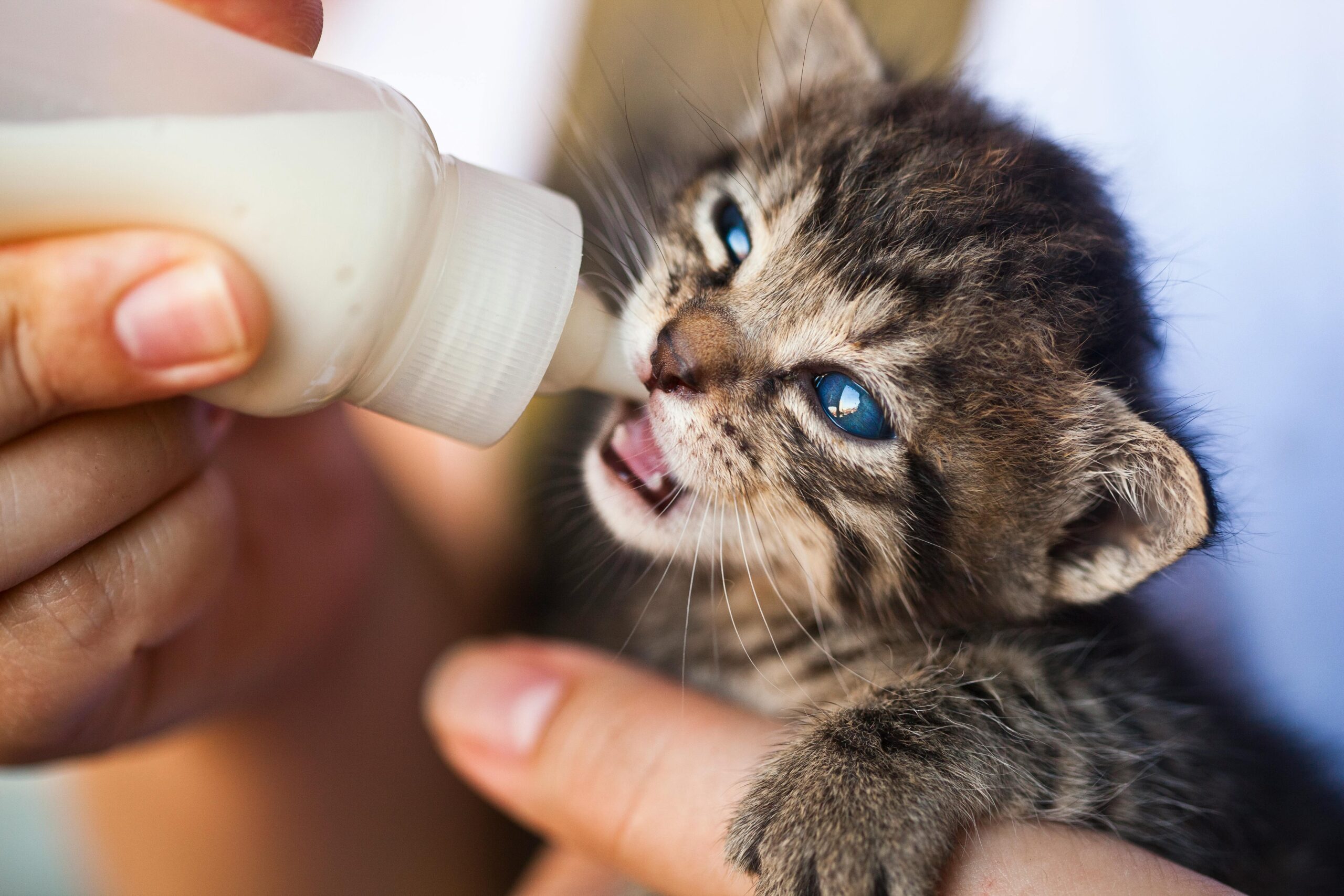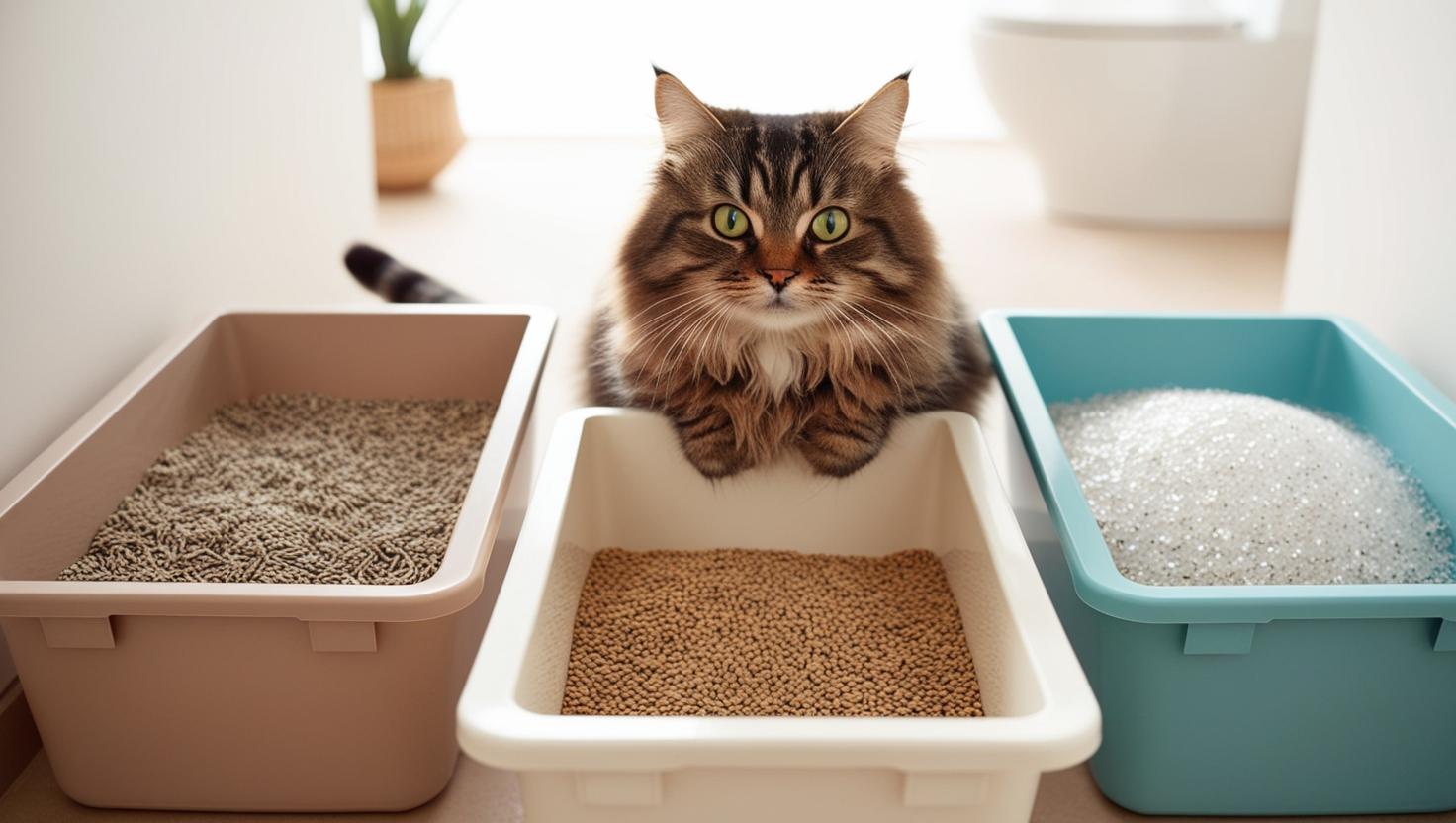Bringing a cat into your home, especially through adoption, is an exciting and rewarding experience. However, learning how to care for a cat can feel overwhelming if you’ve never done it before. Being prepared for your new cat will help with a smooth transition for you and for kitty. This guide will provide you with the essentials on how to take care of a cat including how to prepare your home, nutrition, grooming, and more!
Table of Contents
How To Take Care Of A Cat Adjusting To A New Environment
Before diving into the more practical elements, you should know that the most important thing to do after bringing a cat home is to give it time and space. Figuring out how to take care of a cat that actively avoids you can certainly be a challenge. However it’s essential that you give your cat time to get comfortable.
Cats are naturally curious but also instinctively seek out safe havens. Creating a safe space, such as a designated room with hiding spots like cardboard boxes or a cat carrier, allows them to explore their new surroundings at their own pace. This reduces anxiety and helps them feel more comfortable in their new home.
Keep reading for 7 tips on how to take care of a cat during and after the initial adjustment period.
1. Providing a Safe and Comfortable Environment
When thinking about how to take care of a cat, consider that your home is now their home too. There are certain changes that you will have to make to ensure your cat can be safe and happy. While they can be very adaptable, your home and lifestyle are important considerations when thinking about how to take care of a cat.
Is there lots of traffic in and out of your home? Small children or other animals? Do you have an unpredictable schedule? None of these things are dealbreakers, but they can contribute to stress in cats. It’s likely that you have things in your home that don’t seem dangerous but, for your cat, could bring serious trouble. For example, some houseplants are toxic for cats. You may need to part ways with some of your household items in order to create a safe space.
A comfortable space enhances a cat’s quality of life, so you want to make sure you can provide cozy resting places like soft beds, window perches, and cat trees. These elevated areas allow cats to observe their surroundings from a safe distance, fulfilling their natural instincts. Access to fresh water, food, and a clean litter box are essential for basic needs and contribute significantly to their overall comfort.
Learning how to take care of a cat could very well come with changes changes for you. Some of those changes, like rearraging of getting rid of things, could be difficult to accept at first, but providing an appropriate space for a new cat is essential to their well-being and happiness. A safe environment supports feelings of security and reduces stress, which is vital for their overall cat health.
- Create a safe space: Ensure your home is free from hazards like toxic plants, dangling cords, and unsecured chemicals.
- Provide a comfortable resting place: Offer a variety of cozy spots for your cat to relax, such as cat trees, beds, and window perches.
- Litter box essentials:
- Provide a clean litter box in a quiet, easily accessible location.
- Use appropriate litter and scoop it daily.
- Consider multiple boxes for multi-cat households.
2. Nutrition and Hydration

Many of us are guilty of not treating ourselves to a quality diet. This is not a practice that you want to adopt for your cat. There are many different opinions about how to take care of a cat’s nutritional needs but, ultimately, you will need to make that decision for yourself.
Cat nutrition is not to be disregarded when learning how to take care of a cat. As obligate carnivores, they have specific dietary needs that differ significantly from humans. They require a diet rich in animal-based protein, essential fatty acids, and specific vitamins and minerals. These nutrients are building blocks for supporting their growth, development, and maintaining vital bodily functions.
Choosing the right diet for your cat can be overwhelming with so many options available. Factors such as age, breed, activity level, and any underlying health conditions must be considered. Consulting with your veterinarian is essential to determine the best dietary approach for your individual cat. They can provide personalized recommendations based on your cat’s specific needs and help you navigate the complexities of choosing the right food.
- High-quality food: Feed your cat a balanced diet of high-quality wet or dry food.
- Fresh water: Always provide access to fresh, clean water in multiple locations.
- Treats in moderation: Offer healthy treats occasionally as rewards.
3. Grooming and Hygiene
Grooming is essential for maintaining a cat’s health and well-being, but can also be one of the more difficult parts of learning how to take care of a cat. It’s important to introduce your cat to grooming early to help them get comfortable with the process.
Brushing
Regular brushing removes loose hair, prevents mats, and distributes natural oils, keeping their coat shiny and healthy. Brushing also stimulates blood circulation to the skin, promoting healthy skin and a shiny coat. For long-haired cats, daily brushing is often recommended to prevent matting and reduce shedding. Regular brushing also allows you to check for any skin irritations, parasites, or lumps that may require attention from your veterinarian.
Nail Trimming
Keeping your cat’s nails trimmed is important for their health, but also for the protection of your furniture and belongings! Long nails can become overgrown and curved, growing into the sensitive quick, which is the blood vessel and nerve within the nail. This can cause pain and discomfort for your cat. Overgrown nails can also make it difficult for them to walk properly, leading to discomfort and potential joint problems. Regularly trimming your cat’s nails will prevent these issues, keep them comfortable, and protect your home from unwanted scratches.
Dental Hygiene
Dental hygiene just as important cats as it is for humans. Skipping dental hygiene can lead to serious problems such as gum disease, tooth decay, and even tooth loss. Regular dental care including brushing your cat’s teeth with a cat-specific toothpaste, providing dental chews or toys, and scheduling regular dental check-ups with your veterinarian, helps prevent these issues.
Neglecting grooming can result in matted fur, painful claws, dental issues, and even skin problems. Regular grooming not only improves your cat’s appearance but also strengthens your bond and allows you to monitor their overall health.
- Regular brushing: Brush your cat regularly to remove loose fur and prevent mats.
- Nail trims: Trim your cat’s nails regularly to prevent scratching furniture.
- Dental Hygiene: Keep up with your cat’s dental hygiene to avoid problems like gum disease.
- Ear cleaning: Gently clean your cat’s ears with a veterinarian-approved ear cleaner.
4. Enrichment and Play

You may not consider playtime when thinking about how to take care of a cat, but enrichment and play should be built into life with your feline friend. Just like humans, cats need stimulation to stay happy and healthy. Playtime allows them to exercise their natural hunting instincts, burning off excess energy and preventing boredom. Engaging in play also strengthens the bond between you and your cat.
Neglecting enrichment can have serious consequences for your cat. Boredom can lead to destructive behaviors like scratching furniture, excessive grooming, and even aggression. Lack of physical activity can contribute to weight gain and health problems. A lack of mental stimulation can lead to anxiety, depression, and a decline in overall quality of life. Providing adequate enrichment through play, puzzle feeders, and interactive toys is essential for ensuring your feline friend lives a happy, healthy, and fulfilling life.
- Interactive play: Engage your cat in interactive play sessions with toys like feather wands, laser pointers, and puzzle feeders.
- Scratching posts: Provide sturdy scratching posts to satisfy your cat’s natural scratching instincts.
- Mental stimulation: Offer puzzle feeders and interactive toys to keep your cat mentally engaged.
5. Veterinary Care
One of thing biggest things to know when learning how to take care of a cat is, no matter what you tell yourself, your cat will end up at the vet. You can have expert knowledge of how to care for cats and still end up dealing with an illness or injury.
Unplanned trips to the vet can create a big financial impact. Understanding your options, including pet insurance, for emergency care is a vital step. Knowing the location of the nearest emergency veterinary clinic, having their contact information readily available, and familiarizing your cat with the carrier are great things to have checked off of the list in preparation for an emergency.
Even if you never have an emergency, routine veterinary care is essential for maintaining your cat’s health. Regular check-ups allow the veterinarian to monitor your cat’s growth and development, keep your cat up-to-date with vaccines, and identify and address potential health problems early on. These visits also provide an opportunity to discuss any concerns you may have about your cat’s behavior or overall health.
Knowing how to take care of a cat is equally as important as planning to get appropriate vet care if he ever needs it. By being proactive about both routine and emergency vet care, you can ensure your feline companion receives the best possible medical attention throughout their life.
- Regular check-ups: Schedule regular check-ups with your veterinarian for vaccinations, parasite prevention, and overall health assessments.
- Emergency care: Be prepared to handle emergencies by knowing the location of the nearest emergency veterinary clinic and making financial preparations.
6. Socialization and Training
As time goes on, you will get more comfortable with how to take care of a cat. You’ll need to think about how to get your cat comfortable, as well. Socialization involves exposing kittens to a variety of sights, sounds, and experiences, such as different people, animals, and environments. This helps them develop into confident and well-adjusted adults, reducing their fear and anxiety in new situations. Training, on the other hand, teaches cats appropriate behaviors, such as using a scratching post instead of furniture or coming when called.
Failing to socialize and train a cat can have consequences. Poorly socialized cats may become fearful, anxious, and even aggressive towards people, other animals, or new experiences. This can lead to behavioral problems like hiding, excessive vocalization, or destructive behaviors. Untrained cats may exhibit undesirable behaviors like scratching furniture, inappropriate elimination, and aggression. These behaviors can strain the human-animal bond and may even lead to the cat being rehomed.
By investing time and effort in socialization and training, you can help your cat become a happy, well-adjusted member of your family and enrich your relationship with your feline companion.
- Early socialization: If you have a kitten, introduce them to various sights, sounds, and experiences to help them become well-adjusted.
- Positive reinforcement: Use positive reinforcement training techniques to teach your cat desired behaviors, such as using a scratching post.
7. Understanding Cat Behavior

Learning how to take care of a cat means learning to understand its behavior. Understanding cat behavior is crucial for providing proper care. By observing their natural tendencies, you can create an environment that caters to their instincts. For example, cats are naturally curious and enjoy exploring. Providing vertical spaces like cat trees and window perches allows them to satisfy this need. Recognizing their playful nature, you can engage them with interactive toys to keep them mentally and physically stimulated.
Understanding normal cat behavior is also helpful for identifying potential health issues. Changes in appetite, litter box habits, grooming routines, or energy levels can indicate underlying medical conditions. By closely observing your cat’s daily routines and recognizing subtle changes in their behavior, you can quickly identify potential problems and seek veterinary attention promptly. This proactive approach can help ensure your feline friend lives a long and healthy life.
- Observe your cat: Pay attention to your cat’s body language and vocalizations to understand their needs and preferences.
- Consult resources: Utilize online resources and consult with a veterinarian or certified cat behaviorist for guidance on any behavioral issues.
Learning How To Take Care Of A Cat Should Be Fun!
Figuring out how to take care of a cat will involve some trial and error. Remember, every cat is unique, and their individual needs may vary. By providing a loving, safe, and stimulating environment, you can ensure your feline friend lives a happy and healthy life. You’re already on the right track to being a great owner by reading up on how to take care of a cat. Soon, it will be second nature and you’ll be living it up with your new cat!



